Claws
2008
maps for Claws
'09 maps for:
Bea
--
Buck -- Caley --
Claws --
Conomo --
Hix --
Hudson 09 -- Isabel --
Katy -- L.R. --
Moffet --
Mr. Hannah --
Ozzie --
Penelope
--
Rafael
2010 maps for: Belle
-- Buck --
Gunny --
Hudson --
Mr. Hannah --
Neale --
North Fork Bob
--
Penelope --
Sanford
-- Sr. Bones --
Thatch
2011 maps:
Belle --
Buck --
Henrietta --
Katbird
-- North Fork Bob --
Pemi --
Saco --
Sanford --
Sr. Bones --
Snowy --
Thatch -- Tucker
2012 maps: Art --
Belle --
Bridger --
Chip --
Cutch --
Jill -- North Fork Bob --
Rammie --
Snowy --
Sr. Bones -- Thatch
2013 maps: Art --
Belle --
Bridger --
North Fork Bob --
Rammie --
Snowy --
Sr. Bones
Osprey
main page --
Migration
page --
Migration09 --
Migration10 --
Migration 11 --
Migration 12 --
Migration 13 -- Home
Page
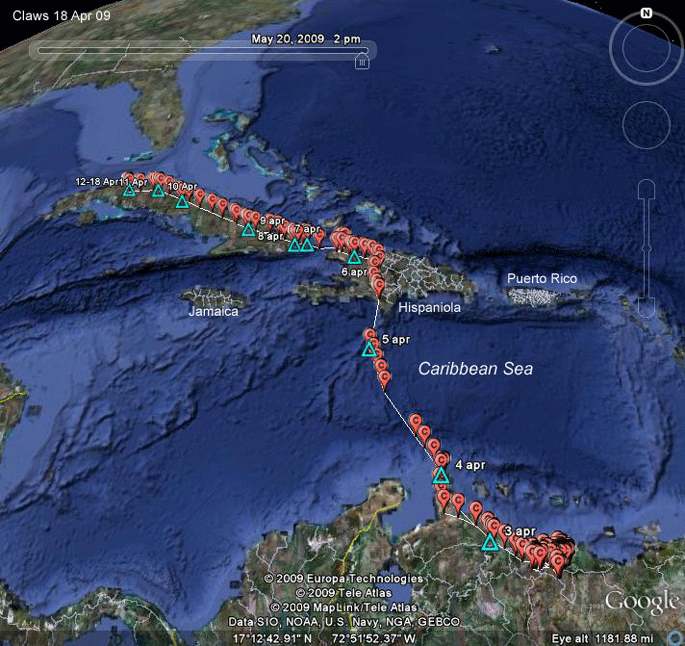 |
18 Apr 09. Claws did not make it out of Cuba. This is perhaps the most frustrating loss we have had during the study. After 18 months of wandering around northern Venezuela, Claws took off for his first migration north. Everything was on track as he crossed Hispaniola and headed over to Cuba. His last locations were on 18 Apr, where he was fishing at a farm pond. The last signals were from a wooded patch across the pond from the farmhouse. I suspect he was shot and wounded at the pond and made it across the pond where he died. He was one day's flight from safety in Florida. |
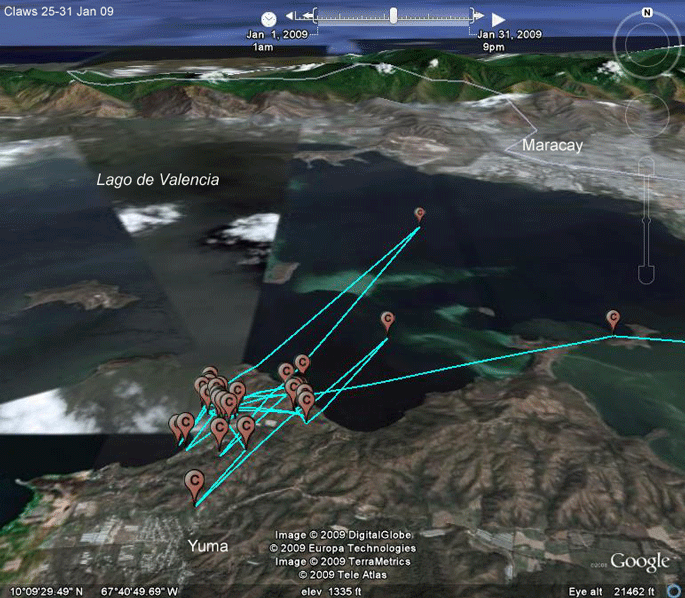 |
He spent 6 days focused in a very small part of the lake. His last set of locations made me very nervous... |
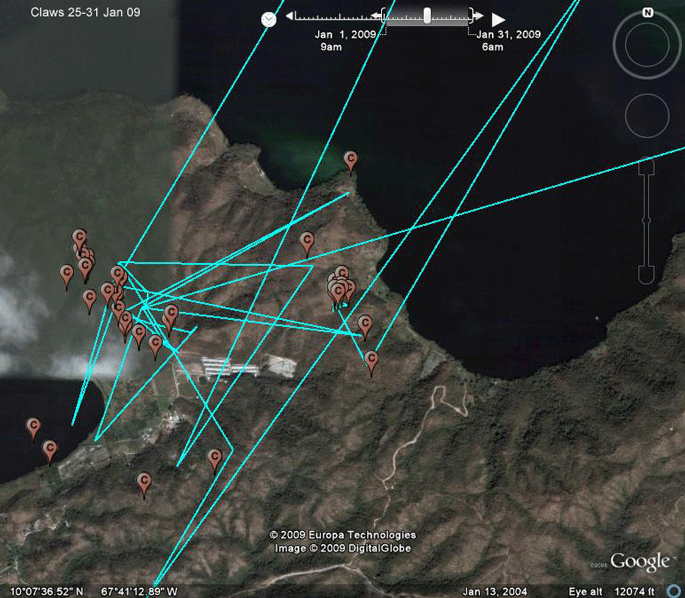 |
When I looked more closely at his
locations, I noticed the strange cluster of points right about in the
middle of this map. All his locations from 0900 on the 30th until the
morning of the 31st were in this one very restricted area. I had never
seen a bird stay in one place this long and started worrying that he was
injured. He had spent the previous days at some sort of large
agricultural operation, and given our recent loss of Meadow at a farm in
the D.R., I'm getting pretty gun shy. Fortunately, all is well. The next download of data included this cluster with a couple of points out in the lake that somehow didn't get downloaded in the previous dataset, so he really wasn't stuck at that spot, wounded as I had imagined. And he was back east at his old favorite spots a couple of days later. Phew! |
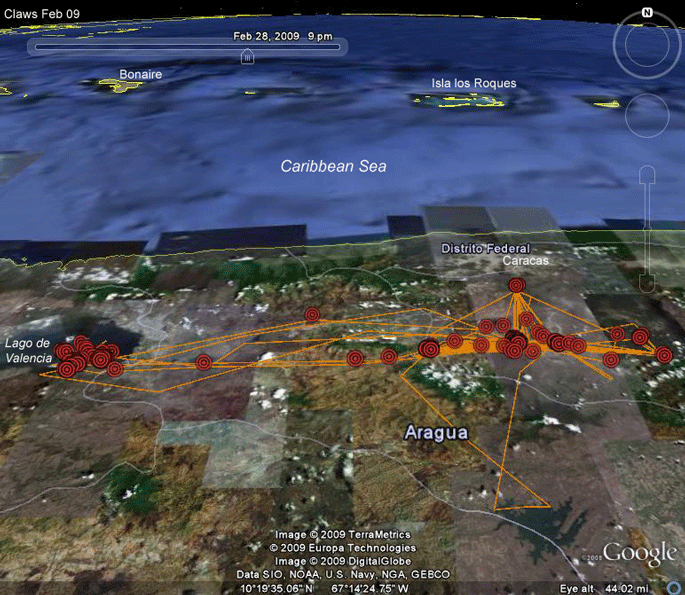 |
Feb 09. Claws continues to range over a far wider area (70 mi from east to west on this map) than any other bird we have followed on the wintering grounds. In the first half of February he was back and forth between Lago Valencia and his old familiar reservoirs south of Caracas. In the last 10 days or so of the month he spent all his time south of Caracas. |
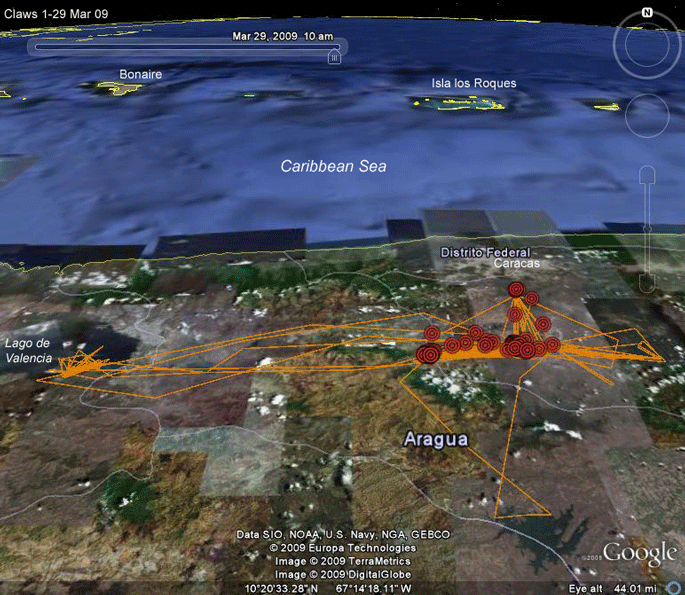 |
Mar 09. Claws is back to his core area. He should head north sometime in April or early May. Adults on the east coast are already on their nesting territories. Teenagers seem to be in no rush to head home. |
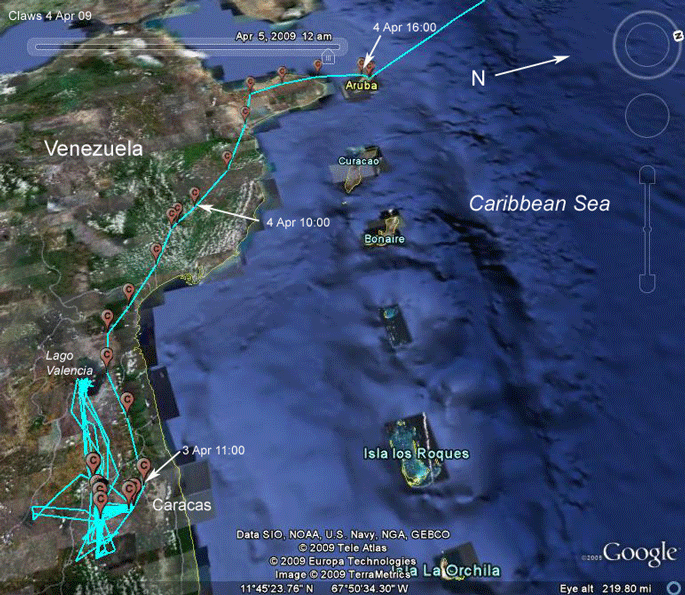 |
30 Mar-5 Apr 09. (Looking northwest) Claws is finally on the move! He left his stronghold just south of Caracas and headed east along the coastal mountain range on 3 Apr. The urge to move hit him around 10:45. He started his migration modestly, moving 140 mi (230 km). On the 4th he turned north a bit and spent the night on Aruba, just north of the Gulf of Venezuela, arriving there around 16:00. |
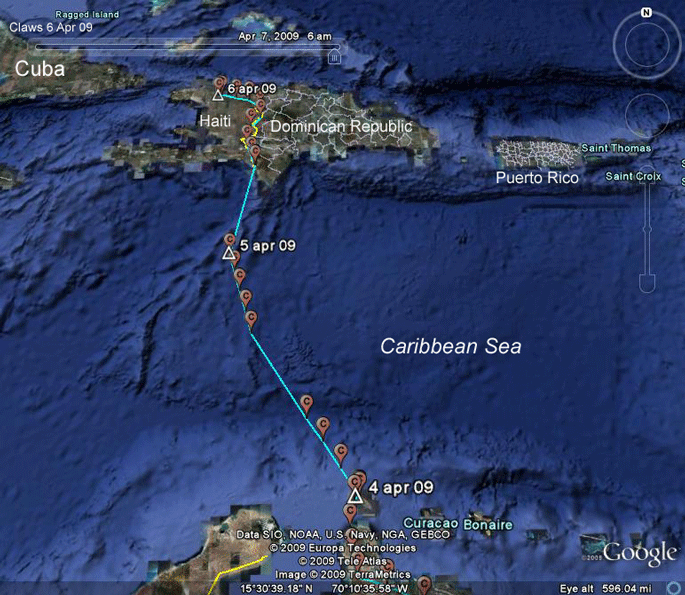 |
5-6 Apr 09. Claws is wasting no time. He began his crossing of the Caribbean on the 5th (probably around 06:00) and flew through the night, arriving on the Haiti side (thank goodness) of Hispaniola. The Caribbean crossing was about 410 mi (666 km) and probably took around 20 hours. He continued north during the 6th. Our last signal from him was from a remote area in northern Haiti. |
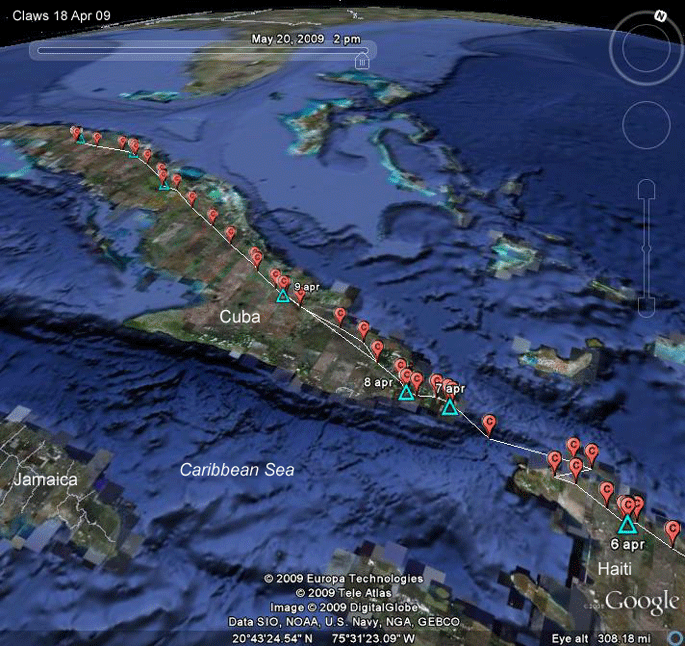 |
7-12 Apr 09. Claws blew through almost all of Cuba in 5 days. On the 13th, instead of continuing, he settled down and started fishing a series of small reservoirs east of Havana. This proved to be a fatal mistake. |
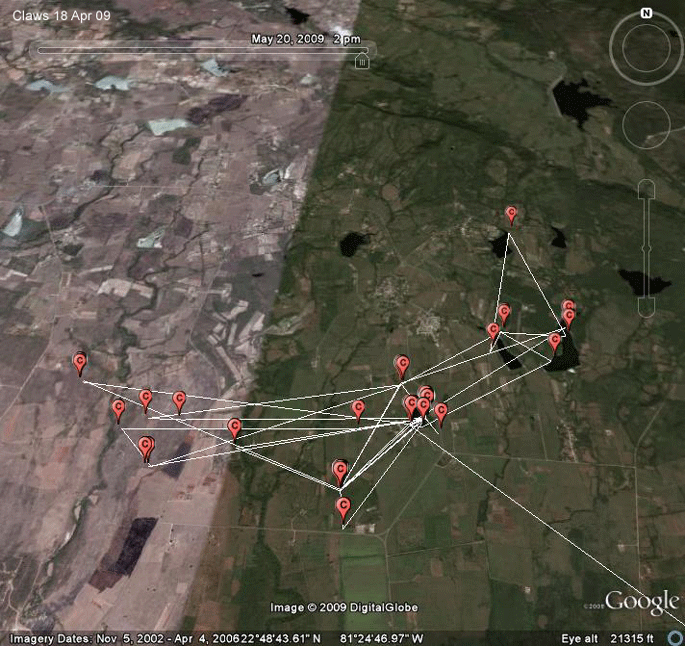 |
12-18 Apr 09. Claws spent 6 days hunting these reservoirs. |
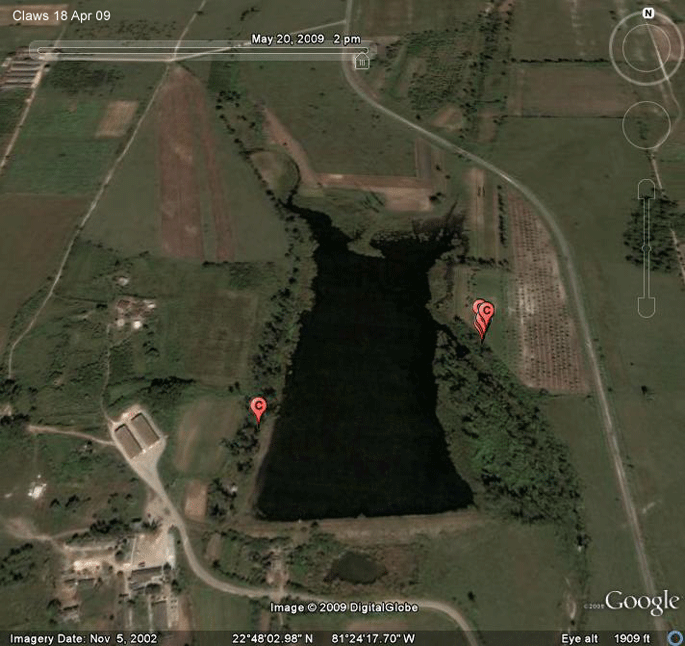 |
18 Apr 09. The end of the road for Claws. We can't be sure, of
course, but it would appear that Claws was shot by someone at this farm
and flew over into the woods, where he died. We wonder to what extent the acclimation to humans that Ospreys nesting in close proximity to all our activity develop proves to be a fatal chink in their armor when they leave the U.S. and enter areas where the locals do not share our conservation ethic. When we ask ourselves, "How could they shoot hawks down there?" we should not forget that well into the 1930s shooting hawks on migration was considered good sport in the U.S. It took us a long time, and probably a shift away from a really agrarian lifestyle to change our attitude. Cornell's Lab for Ornithology is working on a program of across the Caribbean, we hope to improve the situation, but . |
Birds of Prey page -- Osprey main page -- Migration page -- Home Page